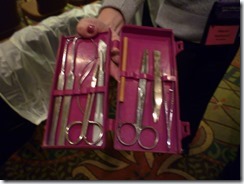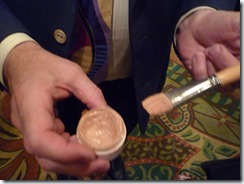I always thought I wasn’t clever enough to come up with good plot twists. Short story writers have the market on this writing technique. Especially in the mystery genre, short fiction often relies on an unexpected twist for its punchline at the end.
So how can cozy writers come up with enough surprises to keep the reader turning pages? Sometimes you can plan ahead. I’ll write a synopsis before I begin writing the actual story. But something happens along the way. The characters, setting, and story elements stew in my brain, and out pops a surprise I didn’t anticipate. This is what I call story magic.
How can you get it to work for you? Review what you’ve written, and note any plot threads that you’ve introduced but failed to resolve. How about that minor character who makes a brief appearance on stage but whose role might be significant? Or the connection between two characters you didn’t expect? Or maybe a new character arrives on scene who upsets the balance among your suspects or your recurrent cast. Who is this person and how do they relate to the plot? To the other people in your story? Why did this person arrive at this time and for what reason?
In other words, pick up on clues that you’ve left for yourself. You’ll be surprised at what you find. If you are taken by surprise, so will your readers be amazed at your plot twists.
You can go back later and revise your synopsis accordingly. Meanwhile, go with the flow and see where it takes you. You’ll be pleased by your reviews when you have a few surprises along the way. Here are some of mine that are particularly pleasing in this respect:
“The story had more twists and turns than a pretzel. And I ate them all up! It is really fast-paced and kept me thoroughly engaged to the end.” Readeropolis

“I recommend this book to those who are cozy mystery fans and enjoy a sleuth mystery with many twists and turns.” Readers’ Favorite
“The storyline is fast-paced and keeps readers guessing to the end. There were several different twists and turns this story could have taken. I was surprised at the outcome.” Socrates Book Reviews
“You are always thinking and on your toes while reading this book. And when you get to the end and everything is revealed….it will blow your mind!” Cozy Mystery Book Reviews
“The story actually has a couple of mysteries within its pages and all is worked out by the end, but there are a lot of plot twists along the way.” Carla Loves to Read
“There were several twists and turns, plus many red herrings in this book. Just when I thought I knew what was going on, the author threw in a few extra curves to have me scratching my head.” Socrates’ Book Reviews
![]()
Sign up now for my latest book news, giveaways, exclusive bonus content, and events. Free book sampler for new subscribers.




























